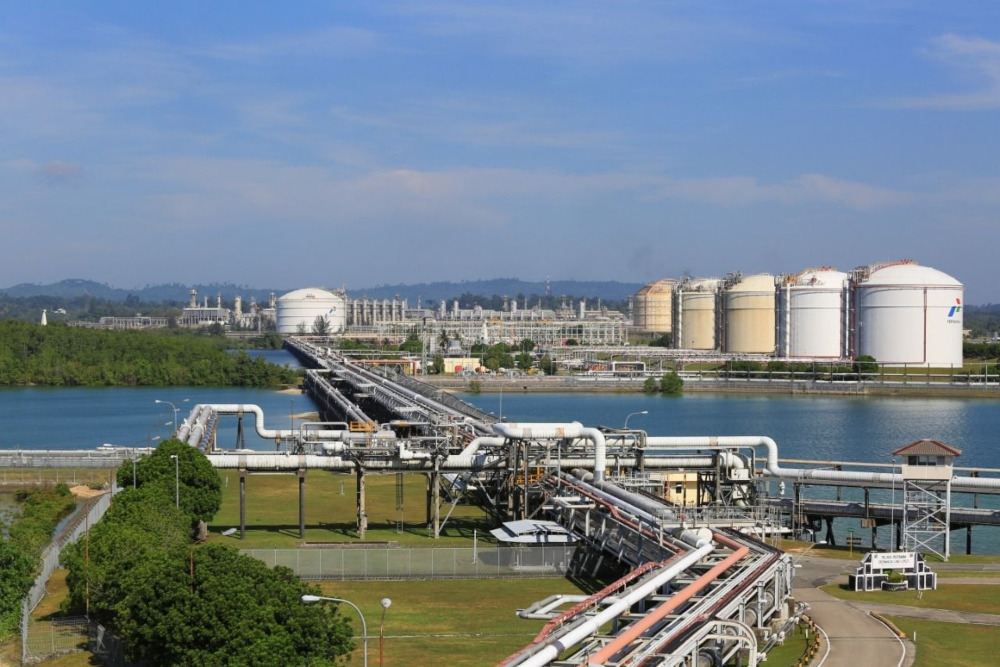PRESERVASI : Causes of corrosion on offshore platforms
Corrosion on offshore platforms is mainly caused by the marine environment, constant exposure to oxygen, temperature, humidity, the settlement of biological colonies and the presence of impurities in the extracted fluids. The combination of these elements promotes chemical and electrochemical reactions that degrade metals under severe conditions that depend on the location area:
- Area above water: The degree of damage in this area depends on the height above sea level. This is due to sodium chloride (NaCl) carried by the air and sea spray deposited on the metal by the action of the wind. A higher concentration of chloride in the metal accelerates the corrosive process.
- Splash area: The highest rate of corrosion occurs in this area, this is due to the high concentration of oxygen and chlorides from seawater splashes, which eliminates any protective film that may form on the surface of the steel.
- Tidal area: This is the range where high tide and low tide move. In high tide regions, the corrosion rate is greater than in low tide regions, and this is due to the formation of a cell of differential oxygen concentration between the low tide region and the peak of the submerged zone. During low tide, when steel surfaces are exposed to the atmosphere, the oxide products (iron oxide, FeO) are very stable and are deposited uniformly over the entire exposed surface, acting as a protective layer that insulates the steel. metal from the aggressive environment and protects it against atmospheric corrosion. Then, when the surfaces are submerged during high tide, the noble region acts as a cathode, reducing the oxides on their surfaces.
- Submerged area: Corrosion is governed by the rate of diffusion of oxygen through water and marine growth present on the surface of the metal.
- Subsoil area: In this area, damage depends on the availability of oxygen in the soil and whether it is considered disturbed or not. It is also affected by microbial activities.
Corrosion prevention strategies
Below are some prevention strategies:
- Protective coatings: Barrier: They prevent the electrolyte from coming into contact with the substrate. Paints are very effective in protecting the atmospheric area. For the splash zone, it is very effective to cover with layers of resistant elastomer, which provides complete protection against the erosive action of seawater, the attack of ozone and ultraviolet rays, the incidental impact of boats and floating debris.
- Inhibitors: Rust inhibitors and anti-corrosion coatings are antioxidants that stop rust formation on metals and alloys. They deposit a film that displaces moisture on surfaces that prevents the formation of corrosive substances. It affects, it affects the kinetics, decreasing the current density and therefore the corrosion rate.
- Galvanized (Cupla galvánica): This coating protects the substrate through self-consumption. For example, consider steel that has been galvanized, meaning it is dipped and covered with a layer of zinc that would be sacrificed to the steel.
- Cathodic Protection (CP): Cathodic protection is a technique in which an anode, sacrifice or electrical current is used to protect the metal of the platform. This involves installing zinc or aluminum anodes (sacrificial anodes) that corrode in place of metal components or by installing an impressed current cathodic protection system. The combination of PC with suitable coatings represents the best option to protect offshore platforms in the submerged area . For the application of this method, the advantages and limitations of sacrificial anode and impressed current systems for use in steel and reinforced concrete structures must be considered. Subsea monitoring and the effects of this method on the platform and coatings must also be considered.
- Proper selection of materials: During the design of offshore platforms, the choice of corrosion-resistant materials, such as stainless steel or nickel alloys, is essential to prevent early degradation. These materials are more expensive, but can significantly extend the life of the deck. Manufacturing the entire structure with the aforementioned materials is not viable, but through a cost, risk, and benefit analysis, the sites where these materials can be installed can be determined.
Monitoring and maintenance
Regular inspection and ongoing preventive maintenance are essential to detect and address this problem in its early stages. Advanced inspection technologies allow for accurate assessment of asset condition.
Innovative technologies
For long-term control on offshore platforms, innovative technologies are developed and applied. Some of the long-term trends and prospects in this field include:
- Advanced Coatings: Advanced coatings with improved corrosion resistance and durability properties are being investigated. This includes self-healing coatings that can repair small cracks and damage on their own.
- Nanotechnology: Nanotechnology is used to develop nanocomposite materials with superior properties that provide more effective and long-lasting protection in extreme offshore conditions.

